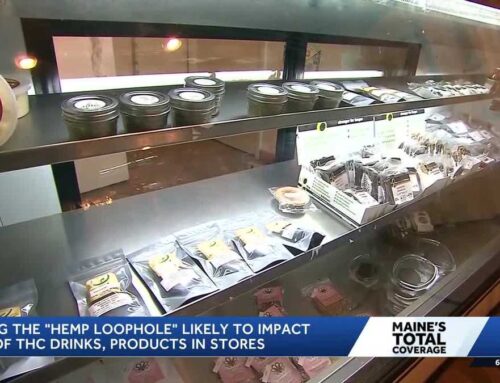International Trade and Cannabis Decontamination Considerations
November 15, 2025
With shifting perceptions, economic incentives, and the evolution of international regulatory frameworks, more countries around the world are starting to embrace legal cannabis for its medical and recreational uses.
One of the hotspots of legalization remains the European Union, where countries like Malta and Luxembourg have legalized cannabis for adult use, and Switzerland and the Netherlands have pilot programs in place. These pilot programs are temporary, limited initiatives that are implemented by a country’s government to test and gather data on the effects of legalizing and regulating the sale of cannabis. Rather than diving headfirst into full-blown adult-use legalization, many nations will take this approach to study the impact different regulatory models can have in a smaller, controlled environment.
As of May 2024, twenty-one of 27 EU states have legalized cannabis for medical use, with one of the most prominent being Germany. After passing the Cannabis Act (CanG) in April 2024, Germany’s medical cannabis industry expanded rapidly as the legislative action improved patient access and removed some administrative burdens for prescribing physicians.
Reliance on Foreign Partners for Optimal Market Growth and Efficiency
As legal cannabis use spreads globally, nations will need to continue to build and rely on partnerships with one another to provide ongoing support for safety and quality assurance and foster symbiotic market growth. For example, Canada legalized cannabis for adult use in 2018. In the years that followed, the country faced challenges due to oversupply. In 2020, Health Canada reported an excess of 600,000 kilograms of unpackaged dry cannabis flower and an additional 46,413 kilograms of packaged flower. To help counteract the buildup of excess product, Canada has now emerged as the largest exporter of medical-grade cannabis to EU states with thriving medical cannabis markets like Germany.
Quality & Safety Controls for Medical Cannabis
To be able to import cannabis for medical purposes into the EU, it must meet stringent rules and regulations for safety and quality control. Contaminated cannabis has the potential to cause harm, especially to medical patients who are immunocompromised or have respiratory conditions. Several types of contaminants can be found in cannabis, including microbial, particulate, and chemical. Microbial contaminants, including bacteria, viruses, yeast, and mold, can be introduced to the product from the environment, raw materials, equipment, or personnel.
Good Agricultural and Collection Practice (GACP)
A first step in quality assurance for medical cannabis is the Good Agricultural and Collection Practice (GACP). GACP provides broad technical guidance on collecting high-quality medicinal plant materials for herbal goods classified as medicines, including medical cannabis. The goals of GACP are to ensure the quality of medicinal plants by providing a broad guide on quality, safety, and efficacy, establishing standard operating procedures, and encouraging and supporting the sustainable cultivation and collection of high-quality plants for medicinal purposes.
European Union-Good Manufacturing Practice (EU GMP) Certification
Developed by regulatory agencies such as Health Canada, the U.S. Food and Drug Administration (FDA), and the World Health Organization (WHO), the European Union-Good Manufacturing Practice (EU GMP) certification is one of the most stringent sets of standards in the international pharmaceutical industry. Regardless of where the cannabis originates from, the product must be GMP-compliant to be sold in the EU.
Under GMP standards, products must be:
- Of consistent high quality;
- Appropriate for intended use;
- Meet the requirements of the marketing association or the clinical trial authorization.
Cannabis must pass regular quality control testing to ensure the product meets the standards for potency, purity, and consistency. The flower must be tested for the presence of microbial contaminants. The goal of a manufacturer following GMP standards is a contamination rate as close to zero as possible. If contaminants are found, the product must be decontaminated and retested, or it risks being rejected and destroyed.
Additional Considerations for Decontamination Tech
Since quality control testing is a significant step in meeting EU GMP compliance, decontamination technology may also play a crucial role in the process. Tech using X-ray, gamma-ray irradiation, ozone gas, or radiofrequency, among others, may be used to decontaminate cannabis of specific microbes.
For example:
- X-ray decontamination – Highly effective on mold, bacteria, and spores.
- Gamma-ray irradiation – Highly effective against all microbes, including spores, but can be harmful to the plant because of intense doses.
- Ozone gas – Effective for mold, mildew, and bacteria. Decontaminates at the surface level only.
- Radiofrequency – Kills mold, yeast, and bacteria. Has the potential to heat the plant and affect its integrity.
While the technology itself does not need to be EU GMP certified, the decontamination technology and process must be compatible with the EU GMP processes of the cultivator and manufacturer, or risk negating their certification.
My company, XRpure, specializes in producing decontamination systems – our models include the XR16 and the XR12 – that allow X-rays to penetrate through cannabis flower and neutralize microbes while preserving its cannabinoid profile.
We recently announced our company’s expansion into Canada to service cultivators and producers exporting medical cannabis to the EU. We are currently implementing several advancements to our technology to align with EU GMP processes, as well as achieving new milestones to demonstrate compliance with foreign directives.
We are currently implementing several changes to the technology’s user interface, including the addition of user profiles in the software: a user profile, an administrator profile (used to set up new users), and an engineer profile (used to set up new recipes). Additionally, we are currently seeking to obtain the CE mark for electrical safety on our decontamination systems. A CE mark signifies that the manufacturer has declared the product complies with all applicable EU directives for safety, health, and environmental protection.
Depending on the system and the process of the cannabis cultivator or manufacturer, other changes to the technology may be required to comply with their EU GMP processes.
As the global cannabis industry continues to expand, countries will continue to rely on foreign partnerships to foster collaboration, innovation, growth, and support for their burgeoning markets. The EU remains an area for cannabis industry expansion, especially in medical markets such as Germany. To support a large base of medical cannabis patients, Germany relies heavily on import partners like Canada for its supply.
For countries seeking to balance growth with safety and compliance, meeting EU GMP and GACP standards is crucial. Technologies like decontamination systems demonstrate how innovation and regulatory oversight can work in tandem to ensure product safety, consistency, and intended use. By continuing to progress alongside evolving international frameworks, the global cannabis industry can achieve sustainable, long-term growth and deliver high-quality products to patients and consumers.
Search
RECENT PRESS RELEASES
Related Post




